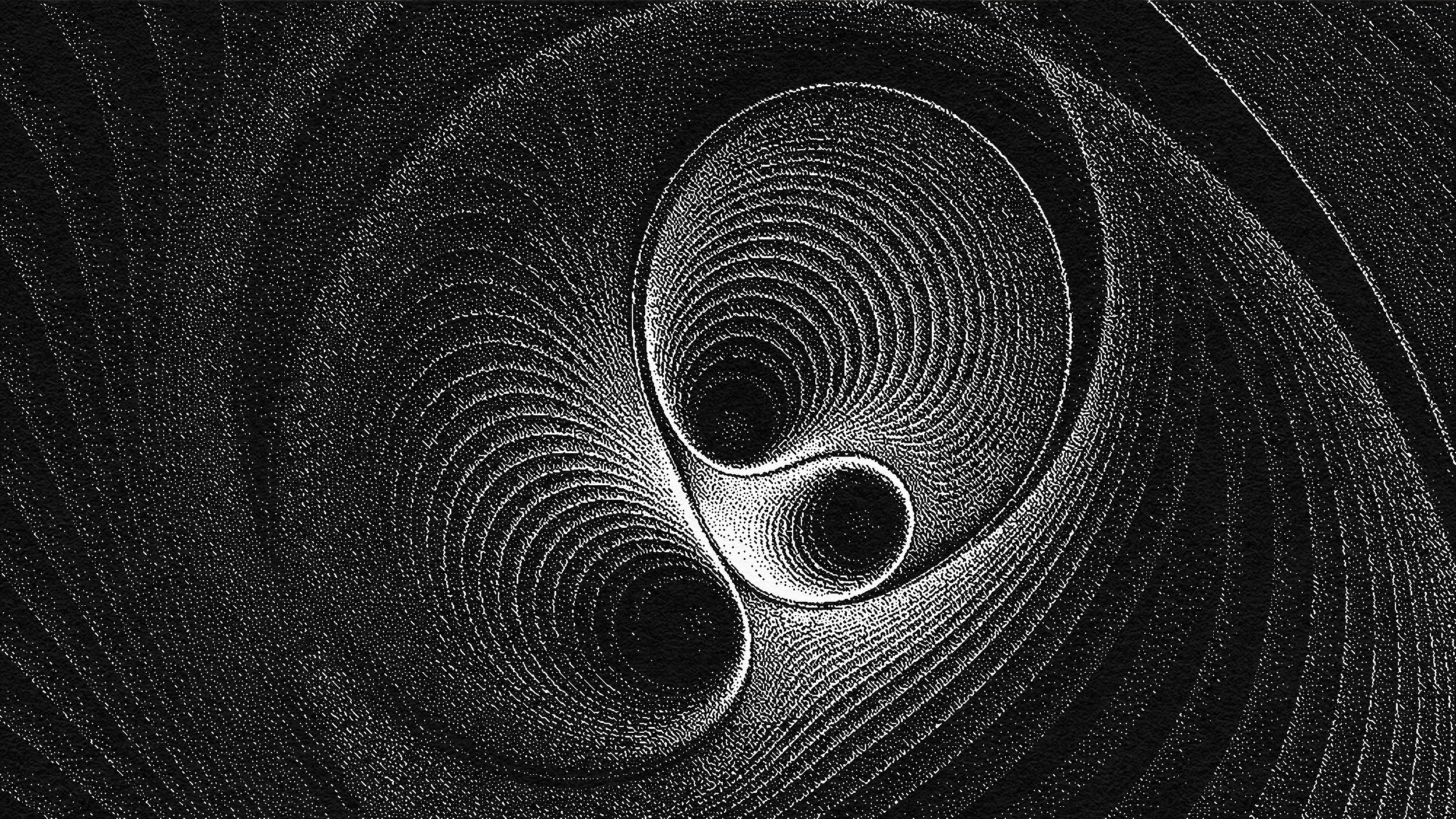Is There Really A Fourth Neutrino Out There In The Universe?
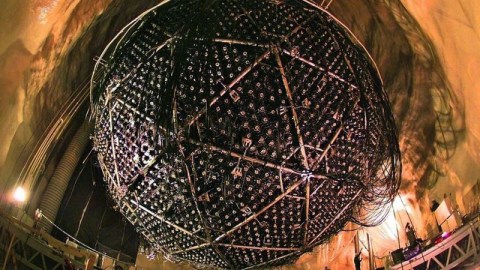
The Standard Model explains all the particles and interactions we see. But it can’t explain this.
Of all the particles that we know of, the elusive neutrino is by far the most difficult to explain. We know there are three types of neutrino: the electron neutrino (νe), the muon neutrino (νμ), and the tau neutrino (ντ), as well as their antimatter counterparts (anti-νe, anti-νμ, and anti-ντ). We know that they have extremely tiny but non-zero masses: the heaviest they can be means it would take over 4 million of them to add up to an electron, the next-lightest particle.
We know that they oscillate — or transform — from one type into another as they travel through space. We know that when we calculate the number of neutrinos produced by the Sun from nuclear fusion, only about a third of the expected number arrive on Earth. We know that they’re generated in the atmosphere from cosmic rays, and from accelerators and reactors when particles decay. According to the Standard Model, there should be only three.
But that story doesn’t add up.
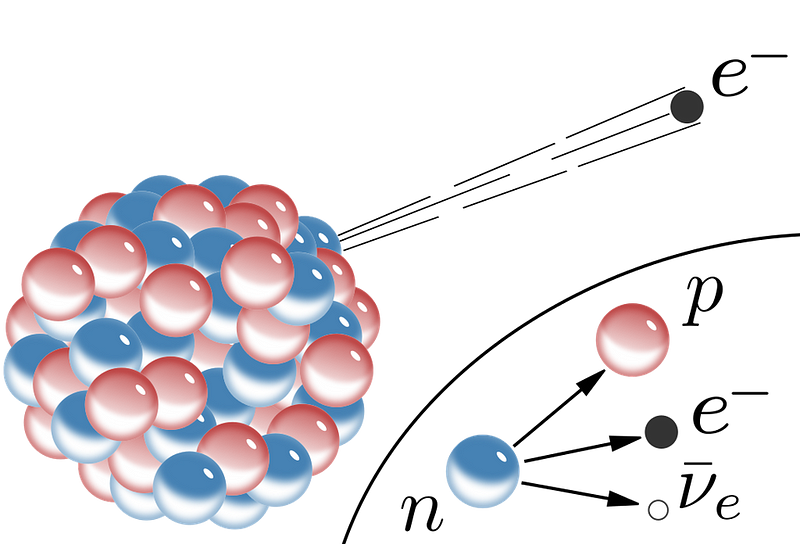
The story began back in 1930, when we were measuring the products of some radioactive decays. In some of those decays, a neutron in an unstable nucleus would get converted into a proton, emitting an electron in the process. But if you added up the mass and energy of the decay products, they were always less than the initial mass of the reactants: it was like energy wasn’t conserved.
To keep energy conservation, Wolfgang Pauli postulated a new type of particle: the neutrino. Although he lamented having done a terrible thing by proposing a particle that could not be detected, it only took 26 years to demonstrate that neutrinos existed. Specifically, the anti-νe was detected from nuclear reactors. Neutrinos were extremely low in mass, but they existed.
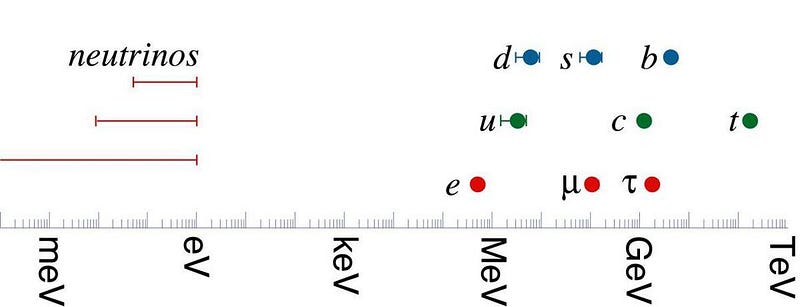
Over time, the discoveries continued, as did the surprises. We modeled the nuclear reactions in the Sun and calculated how many neutrinos should arrive on Earth. When we detected them, however, we saw only a third the expected number. When we measured the neutrinos produced from cosmic ray showers, we again only saw a fraction of what we expected, but it was a different fraction than the neutrinos produced by the Sun.
One possible explanation put forth was based on the quantum mechanical phenomenon of mixing. If you have two particles with identical (or almost identical) quantum properties, they can mix together to form new physical states. If we had three types of neutrino with almost identical masses and other properties, perhaps they could mix together to form the neutrinos (νe, νμ, and ντ) and antineutrinos (anti-νe, anti-νμ, and anti-ντ) we observe in our Universe?
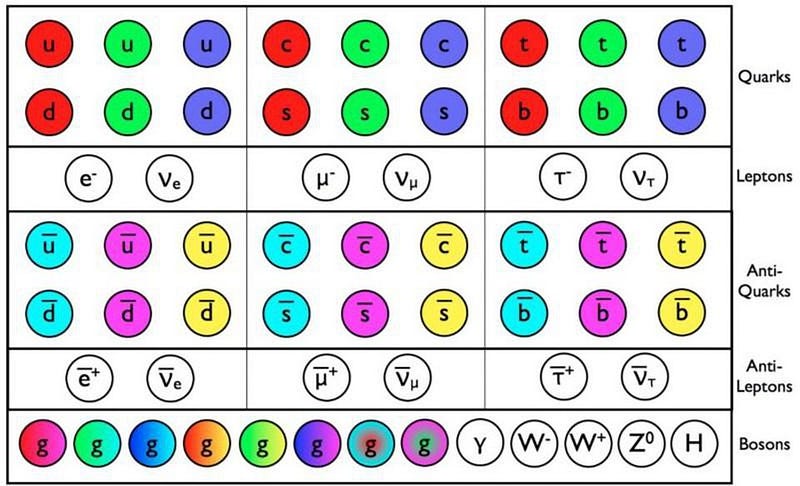
The key measurements first came in during the 1990s, where we were able to measure both atmospheric and solar neutrinos to unprecedented precision. These two measurements informed us about how the neutrinos mixed together, and allowed us to calculate a mass difference between the three different types. With two measurements, we got two differences, which means that the relative figures should be fixed.
Meanwhile, we knew from particle colliders that there could only be three types of neutrino that coupled to the Standard Model particles, and we learned mass limits on the sum of neutrinos from cosmological observations.
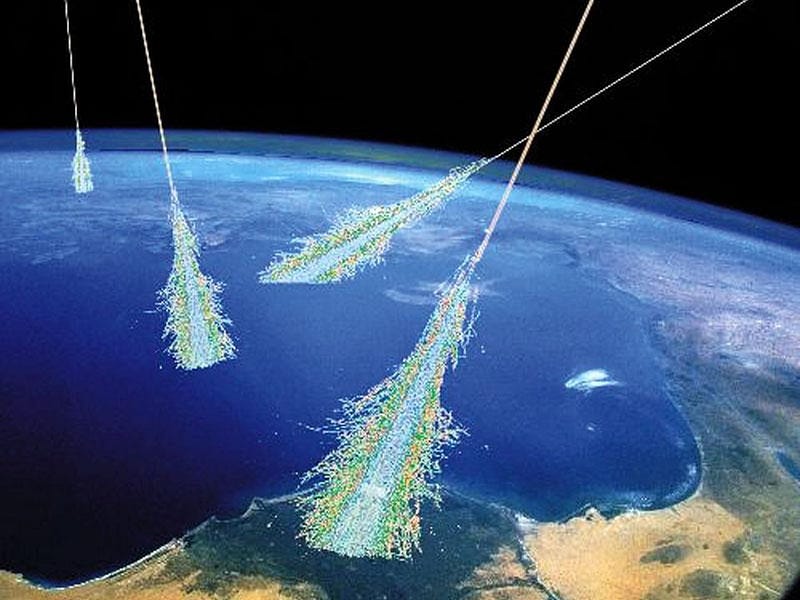
From all of this, we were able to conclude:
- there are three types of neutrino,
- they have tiny, non-zero masses,
- they oscillate over large distances from one flavor (electron, muon, or tau) into another,
- and they can only make up a tiny fraction of the dark matter.
All of this was consistent, until one pesky experiment gave results we absolutely couldn’t explain: the LSND (Liquid Scintillator Neutrino Detector) experiment.
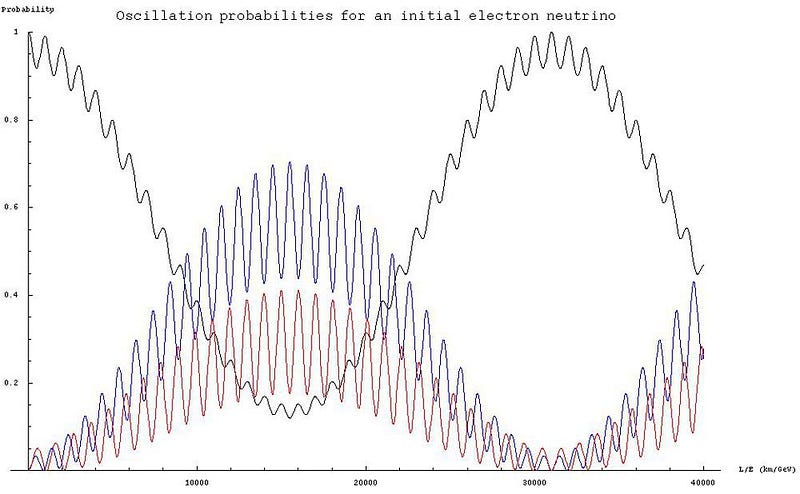
Imagine producing an unstable particle like a muon and letting it decay. You’ll produce an electron, an anti-electron neutrino, and a muon neutrino. Over very short distances, you expect a negligible amount of neutrino oscillations, in order to be consistent with the solar and atmospheric neutrinos. But instead, LSND showed that the neutrinos were oscillating: from one type into another, over distances far less than even one kilometer.
In the physical models we make, there are simple relationships between the distance a neutrino travels, the neutrino energy, and the differences in mass between the different types of neutrinos. The ratio of distance-to-energy corresponds to a mass difference, and from solar and atmospheric neutrinos, we got mass differences of ~milli-electron-volt (meV) scales. But with the small distances from the LSND experiment, it implied mass differences that were about 1000 times greater: ~electron-volt (eV) scales.
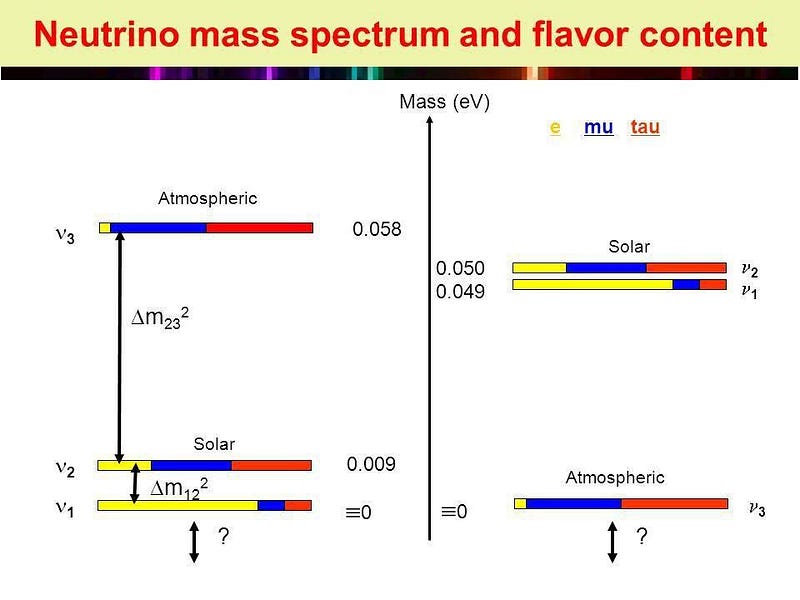
These three measurements — the solar neutrino measurements, the atmospheric neutrino measurements, and the LSND results — are mutually incompatible with the three Standard Model neutrinos we know.
Many people dismissed the LSND results, claiming that there must be an error there. After all, its mass was the outlier (too high), it was only one experiment, and there were many solar and atmospheric measurements from independent experiments over many years. If neutrinos were as massive as LSND said, the cosmic microwave background shouldn’t display the properties we see. If there’s a hot neutrino component to dark matter, it would ruin the Lyman-alpha forest: where we observe the absorption properties of foreground gas clouds from distant light.
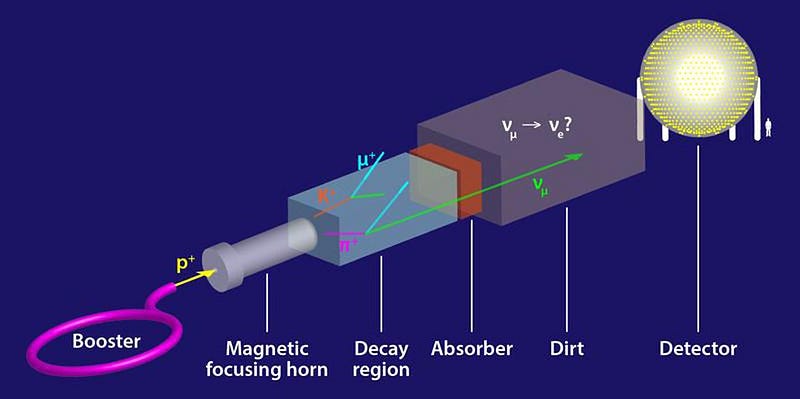
When it comes to science, though, experiments and not theories are the ultimate arbiter of what is correct. You cannot simply say, “this experiment is wrong but I don’t know what’s wrong about it.” You have to try and reproduce it with an independent check, and see what you get. That was the idea of the MiniBooNe experiment at Fermilab, which produced neutrinos from the booster ring in the old Tevatron at Fermilab.
Collide these high-energy particles, produce charged pions, and then the pions decay to muons, creating muon neutrinos (νμ) and muon anti-neutrinos (anti-νμ). With the same distance-to-energy ratio as the LSND experiment, MiniBooNe’s goal was to either confirm or refute the results of LSND. After 16 years of data-taking, MiniBooNe is not only consistent with LSND, it’s extended it.
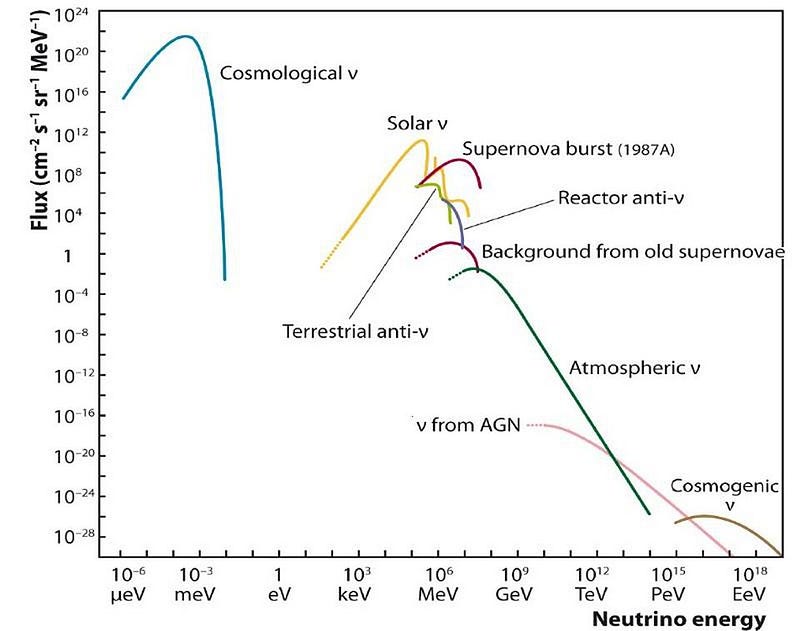
This is a historic moment for neutrinos. We create muon neutrinos in a particular region, and then just 541 meters downstream, detect that they’ve been oscillating in a fashion that’s inconsistent with the other measurements. If you assume that there’s two-neutrino oscillation happening, there must be at least four neutrino types, which means one of them must be sterile: it cannot couple to the strong, electromagnetic, or weak forces.
But this does not necessarily mean that there is a fourth (or more) neutrino! The experiments, which have now reached a combined statistical significance of 6.0σ, have exceeded the standard for discovery in particle physics. But that only means that the experimental results are robust; interpreting what they mean is another story entirely.
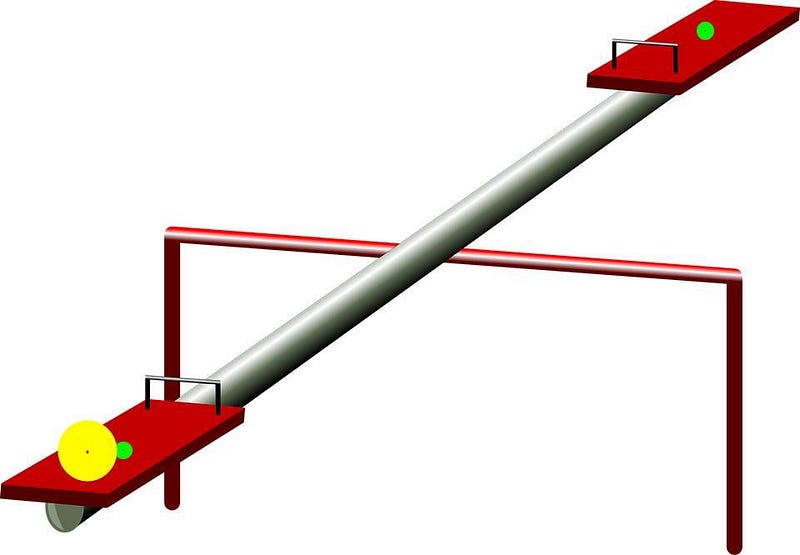
Could there be a more complicated type of mixing between neutrinos than we presently know? Could neutrinos couple to dark matter or dark energy? Could they couple to themselves in a new way that isn’t described by Standard Model interactions? Could the density of the material they pass through — or even the density of the material they’re detected in — make a difference? Could this distance-to-energy ratio be just one component to unlocking a far greater puzzle?
There are planned and ongoing experiments designed to gather more data about exactly this puzzle.
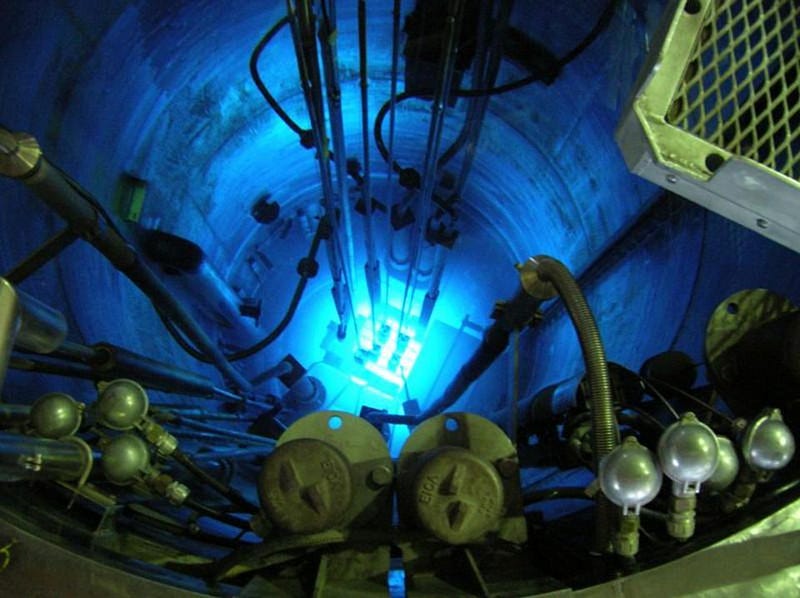
Nuclear reactors, for example, have already observed an electron neutrino and anti-neutrino (νe and anti-νe) deficiency over what’s predicted. The PROSPECT collaboration will measure disappearing reactor neutrinos better than ever before, teaching us whether they might be oscillating into the same, sterile state.
The MicroBooNe detector, expecting results next year, will improve MiniBooNe and have a slightly shorter length baseline and be made of different detector materials of different densities: liquid argon instead of mineral oil. Further down the road, ICARUS and SBND, both to be set up at Fermilab as well, will have significantly longer and shorter (respectively) length baselines and will also use liquid argon for their detectors. If there’s something fishy going on that’s either consistent with a new, sterile neutrino or something else entirely, these experiments will lead the way.
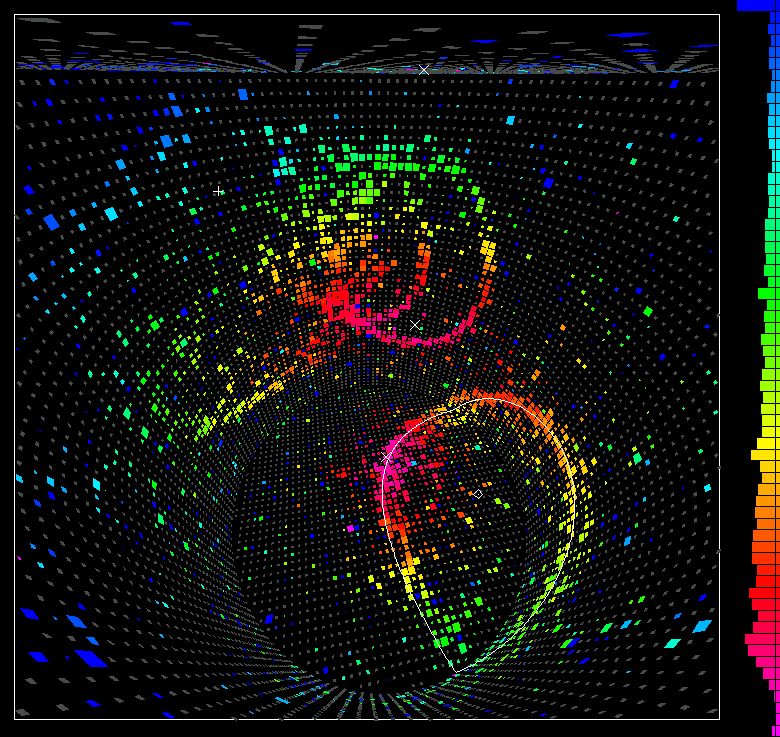
Regardless of what the ultimate explanation is, it’s quite clear that the normal Standard Model, with three neutrinos that oscillate between electron/muon/tau types, cannot account for everything we’ve observed up to this point. The LSND results, once dismissed as a baffling experimental result that must surely be wrong, have been confirmed in a big way. With reactor deficiencies, MiniBooNe’s results, and three new experiments on the horizon to gather more data about these mysteriously misbehaving particles, we may be poised for a new revolution in physics.
The high-energy frontier is only one way we have of learning about the Universe on a fundamental level. Sometimes, we just have to know what the right question to ask truly is. By looking at the lowest-energy particles at different distances from where they’re generated, we just might take the next great leap in our knowledge of physics. Welcome to the era of the neutrino, which is taking us, at last, beyond the Standard Model.
Thanks to Bill Louis of Los Alamos National Laboratory for an incredibly insightful and informative interview about LSND, MiniBooNe, and neutrino experiments.
Ethan Siegel is the author of Beyond the Galaxy and Treknology. You can pre-order his third book, currently in development: the Encyclopaedia Cosmologica.


